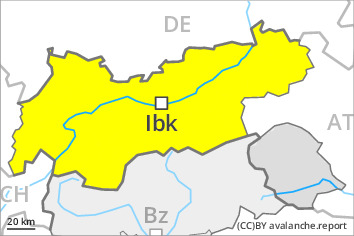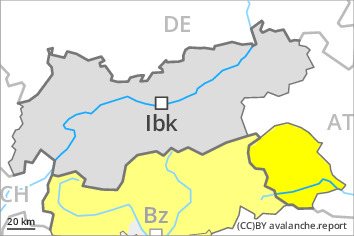
Danger level
 | 2200m |
|  |
|  | ||||
|  |
|  |

As the snowfall level rises loose snow avalanches are to be expected. Gliding avalanches are still possible.
The fresh snow and local mostly small wind slabs can still be released in some cases on very steep shady slopes above approximately 2200 m. Caution is to be exercised in particular on near-ridge slopes. In isolated cases avalanches are medium-sized.
As a consequence of warming and solar radiation, the natural activity of medium loose snow avalanches will appreciably increase, especially in extremely steep terrain in all aspects. Apart from the danger of being buried, restraint should be exercised in particular in view of the danger of avalanches sweeping people along and giving rise to falls.
On steep grassy slopes more frequent medium-sized and, in isolated cases, large gliding avalanches are possible. This applies in particular on steep, snow-free grassy slopes below approximately 2600 m. In steep gullies the avalanches can in some cases reach areas without any snow cover. Areas with glide cracks are to be avoided.
Snowpack
dp.2: gliding snow
In the Stubai Alps, in the Tuxer Alps and in the Zillertal Alps 20 to 40 cm of snow, and even more in some localities, fell on Wednesday above approximately 1200 m. In the other regions over a wide area 10 to 20 cm of snow has fallen.
After a clear night, it will be sunny and mild during the day. These meteorological conditions will bring about a substantial stabilisation of the near-surface layers on steep shady slopes.
Steep east, south and west facing slopes: Here, the new snow layer becomes completely wet during the course of the day.
The old snowpack is wet. This applies in particular on sunny slopes below approximately 2800 m, as well as on shady slopes below approximately 2400 m.
Tendency
The danger of wet avalanches will increase during the day.




